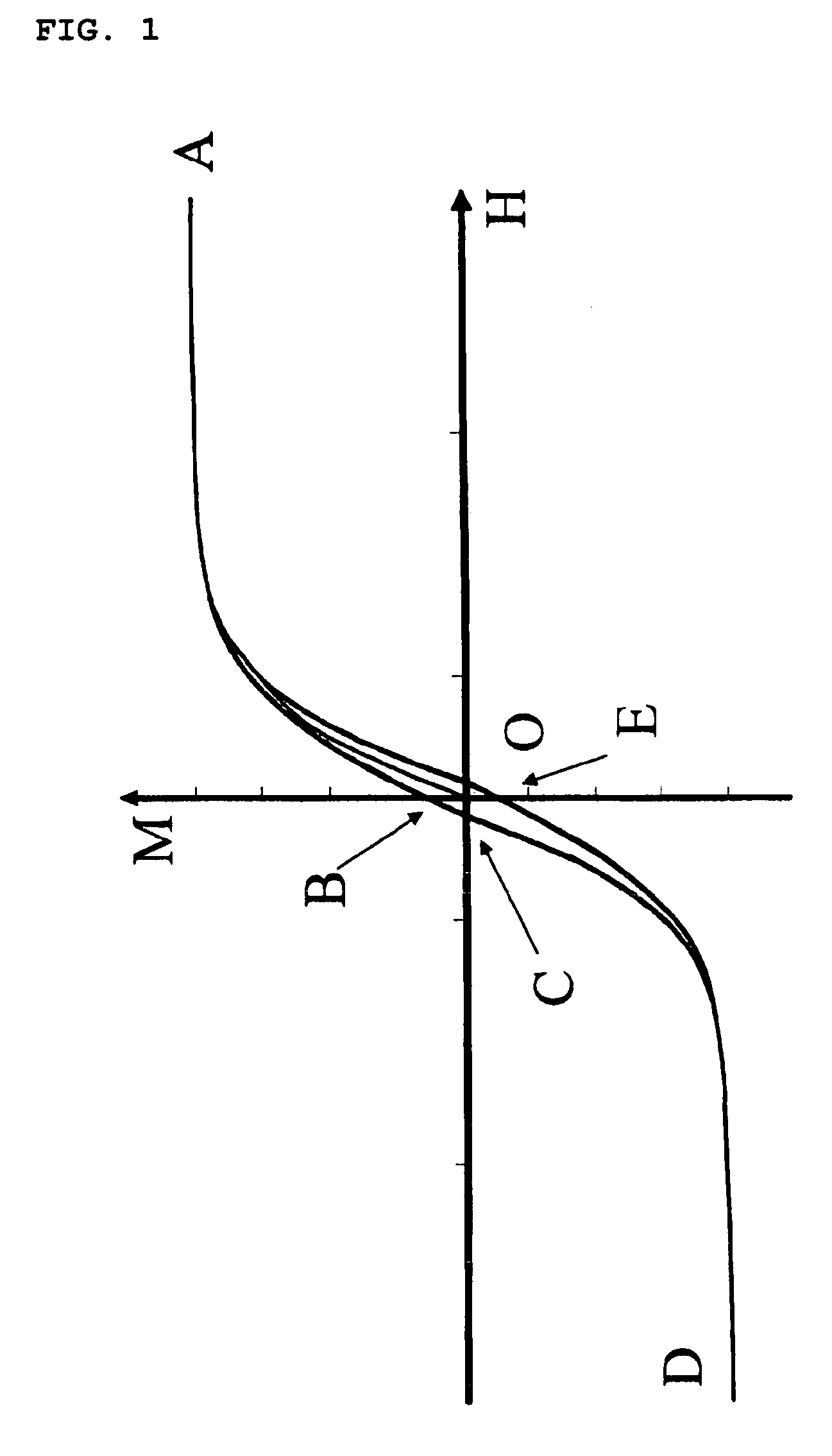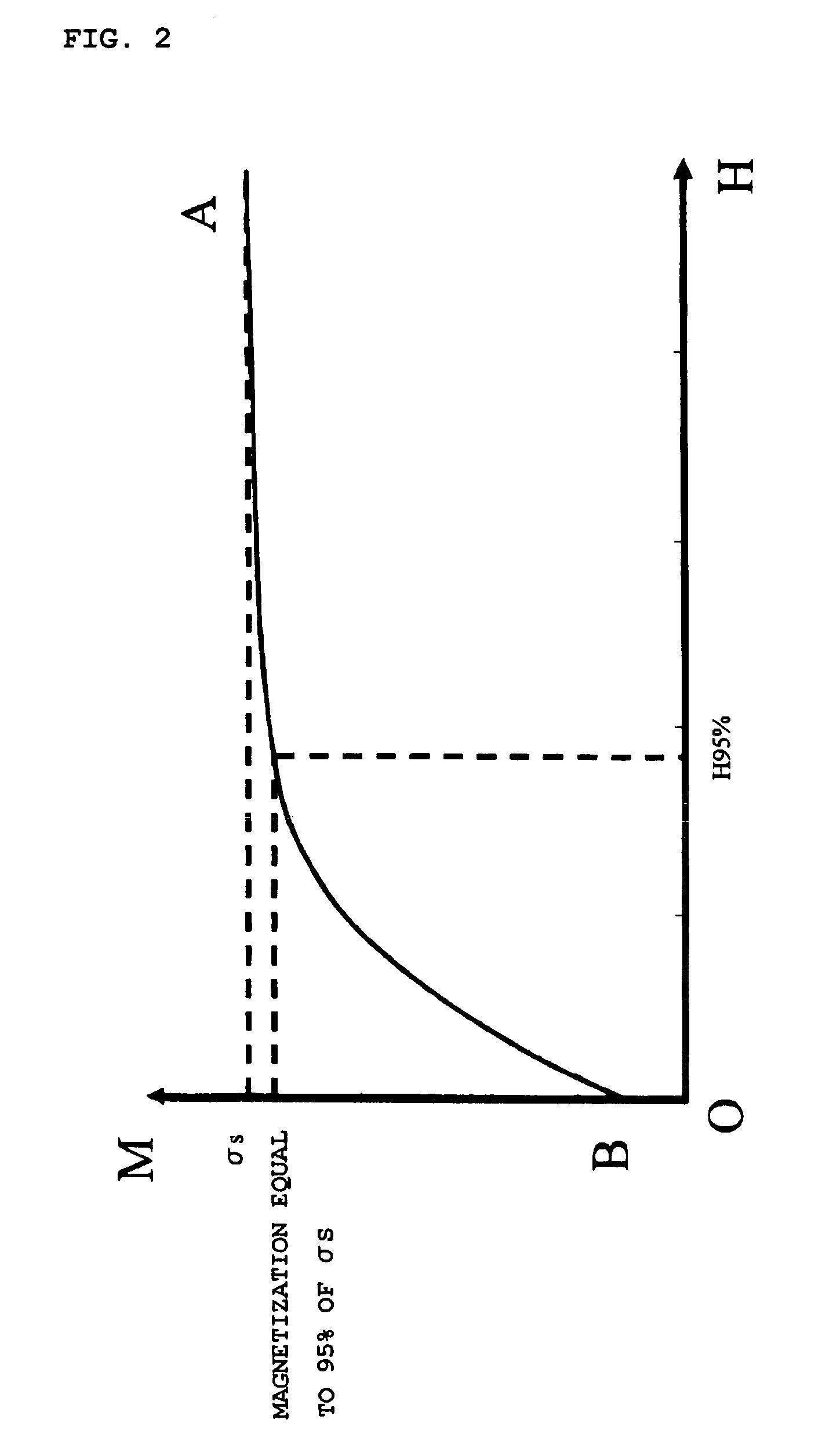Magnetic toner
a technology of magnetic toner and binder resin, applied in the field of magnetic toner, can solve the problems of reducing the dispersion between a binder resin and an internal additive of a magnetic body, fluctuation or deterioration of anyone of various properties requested for magnetic toner, development properties and durability, etc., and achieves excellent fine-line reproducibility, increased process speed, and increased toner loading weight.
- Summary
- Abstract
- Description
- Claims
- Application Information
AI Technical Summary
Benefits of technology
Problems solved by technology
Method used
Image
Examples
production examples 3 to 5
of Magnetic Body
[0220]In each of Production Examples 3 and 4, each of magnetic bodies 3 and 4 was produced in the same manner as in Production Example 1 of Magnetic body except that: the temperature at which the oxidation reaction was performed and the time period for which the oxidation reaction was performed were changed; and the amount of the aqueous solution of sodium silicate was changed. In Production Example 5 (magnetic body 5), a magnetic body 5 was produced in the same manner as in Production Example 1 of Magnetic body except that: the temperature at which the oxidation reaction was performed and the time period for which the oxidation reaction was performed were changed; the amount of the aqueous solution of sodium silicate was changed; and the classifying step after the filtration and drying of the produced maternal magnetic body was omitted. Table 1 shows the physical properties of the magnetic bodies 3 to 5.
production example 6
of Magnetic Body
[0221]A maternal magnetic body F having an octahedral shape was produced in the same manner as in Production Example 1 of Magnetic body except that: the temperature at which the oxidation reaction was performed, the time period for which the oxidation reaction was performed, and the pH at which the oxidation reaction was performed were changed; and the classifying step after the filtration and drying of the produced magnetic body was omitted.
[0222]Next, the maternal magnetic body F was dispersed into water to prepare an aqueous suspension having a concentration of 100 g / l, and the temperature of the aqueous suspension was held at 60 to 80° C. An aqueous solution of sodium hydroxide or dilute sulfuric acid was added to adjust the pH of the aqueous suspension to 10 to 11. An aqueous solution of aluminum sulfate having a Al2O3 concentration of 100 g / l was added in an amount equivalent to 5.6 mass % in terms of Al2O3 / Fe3O4 to the aqueous suspension over about 1 hour whil...
production example 7
of Magnetic Body
[0225]A magnetic body having an octahedral shape and coated with Al2O3 was produced in the same manner as in Production Example 6 of Magnetic body except that: the temperature at which the oxidation reaction was performed and the time period for which the oxidation reaction was performed were changed; and the amount of the aqueous solution of aluminum sulfate was changed. After that, the magnetic body was subjected to a heat treatment at 175° C. for 30 minutes in the air. Thus, a magnetic body 7 was produced. Table 1 shows the physical properties of the magnetic body 7.
PUM
 Login to View More
Login to View More Abstract
Description
Claims
Application Information
 Login to View More
Login to View More - R&D
- Intellectual Property
- Life Sciences
- Materials
- Tech Scout
- Unparalleled Data Quality
- Higher Quality Content
- 60% Fewer Hallucinations
Browse by: Latest US Patents, China's latest patents, Technical Efficacy Thesaurus, Application Domain, Technology Topic, Popular Technical Reports.
© 2025 PatSnap. All rights reserved.Legal|Privacy policy|Modern Slavery Act Transparency Statement|Sitemap|About US| Contact US: help@patsnap.com



